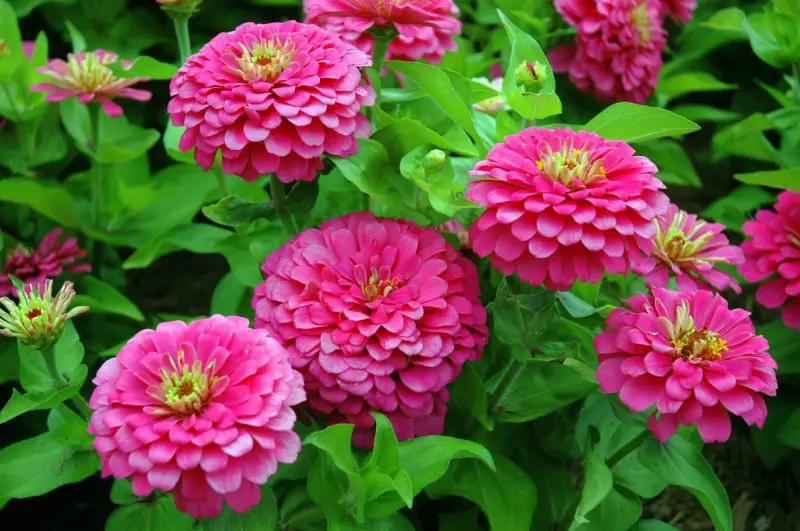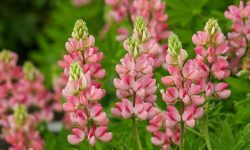Zinnias are one of the easiest and most vibrant flowers to grow, known for their brilliant colors and long-lasting blooms. Whether you’re a seasoned gardener or just starting out, zinnias bring life to any garden bed or container with minimal effort. But to truly enjoy their full blooming potential, you need to understand exactly when zinnias bloom and how to extend their flowering period.
In this guide, you’ll discover the secrets to perfect zinnia timing and expert tips to keep your plants blooming nonstop from summer through fall. With the right planting schedule, care techniques, and maintenance practices, you can transform your garden into a continuous sea of color that lasts for months.
Understanding Zinnia Bloom Times

General Blooming Period
Zinnias are classic warm-season annuals that begin blooming once temperatures consistently stay above 60°F (15°C). Typically, flowering begins in late spring—around late May or early June—and continues through summer into early fall, depending on your region. With proper care, zinnias will keep blooming for several months, often peaking in midsummer when sunlight is strongest. Their ability to bloom steadily over time makes them perfect for gardeners seeking long-lasting color in beds, borders, or containers.
Influence of Climate Zones
Your USDA Hardiness Zone plays a major role in determining when zinnias will bloom. In warmer climates like Zones 9 and 10, you can plant zinnias as early as March or April, resulting in blooms as soon as mid- to late May. In colder zones, such as Zones 3 through 6, it’s best to wait until all danger of frost has passed—typically mid- to late May—before planting outdoors. In these regions, blooms may begin slightly later, around late June or early July, but with care, flowering still lasts until the first frost.
Zinnias are not frost-hardy, so even in warm zones, timing your planting based on the average frost dates ensures that the plants are given the best chance to thrive.
From Seed to Bloom
Zinnias are known for their fast growth cycle, which makes them especially satisfying for gardeners. Once sown—whether directly in the ground or started indoors—they typically germinate within 5 to 10 days. From that point, most varieties will begin blooming in just 6 to 8 weeks. Starting seeds indoors 4 to 6 weeks before your last expected frost can give you a head start on the growing season, meaning your zinnias could begin blooming in late spring rather than early summer.
Direct sowing is also effective and preferred by many gardeners for simplicity, though it may delay the initial blooms by a couple of weeks. Once established, zinnias grow vigorously and will catch up quickly, producing a steady wave of color throughout the season.
When Do Zinnias Stop Blooming?
Zinnia blooming stops abruptly with the first frost. Because zinnias are sensitive to cold, even a light frost can blacken leaves and kill the plant. In most temperate zones, this means blooms end around October or early November. To prolong blooming as long as possible, keep an eye on local weather forecasts and continue regular care through fall.
In frost-free or subtropical regions, zinnias may continue blooming almost year-round. However, even in these areas, the plants can eventually exhaust themselves, especially if not deadheaded or pruned regularly. Once plants begin to look tired or leggy, you can either remove them and replant or allow them to go to seed for collection and regrowth.
How to Encourage More Blooms
Choose the Right Variety
Not all zinnias are created equal when it comes to bloom time and flower production. Some varieties are bred specifically for quick flowering and continuous blooms. Dwarf varieties like Zinnia elegans ‘Thumbelina’ and Zinnia ‘Profusion’ typically begin blooming sooner—often within six weeks of planting—and continue steadily throughout the season. These compact varieties are perfect for borders, containers, or smaller gardens.
On the other hand, tall varieties such as Zinnia ‘Benary’s Giant’ or Zinnia ‘State Fair Mix’ may take a bit longer to bloom but reward you with large, show-stopping flowers ideal for cutting gardens. When planning your zinnia display, consider mixing both early and late bloomers for extended color throughout the season.
Start Seeds Indoors
Starting zinnia seeds indoors gives you a head start on the growing season, especially in cooler climates with short summers. Sow seeds in seed trays or small pots filled with seed-starting mix, placing them near a sunny window or under grow lights. Maintain a temperature of 70°F to 75°F (21–24°C) to ensure strong germination.
After four to six weeks of indoor growth, and once outdoor temperatures remain consistently warm—especially the soil temperature—harden off your seedlings by gradually introducing them to outdoor conditions over the course of a week. This practice prevents transplant shock and promotes faster growth once planted in the garden.
Provide Full Sunlight
Zinnias are true sun-worshippers. To produce the most and best-quality blooms, they require full sun exposure—at least six to eight hours of direct sunlight per day. Insufficient sunlight can result in leggy growth, pale flowers, and reduced overall blooming.
Choose a planting site that receives morning to late afternoon sun without obstruction. In containers, place pots in sunny spots like patios, decks, or balconies with ample light. If you’re growing zinnias indoors temporarily, consider supplementing with grow lights until outdoor conditions are ideal.
Use Well-Draining Soil
Soil quality plays a critical role in how well your zinnias bloom. These flowers prefer loose, well-draining soil rich in organic matter. Heavy clay soils retain too much moisture and can cause root problems, while sandy soils may need enrichment to retain enough nutrients.
Before planting, amend your soil with compost, aged manure, or a balanced organic soil conditioner. This improves both drainage and fertility. For container planting, use a premium potting mix formulated for flowers. Always make sure your containers have sufficient drainage holes to prevent soggy roots, which can lead to reduced flower production or disease.
Water Consistently but Not Excessively
Though zinnias are relatively drought-tolerant once established, they perform best with consistent watering. The key is deep but infrequent watering, which encourages deep root growth and supports steady blooming. In most regions, watering once or twice per week is sufficient—more frequently during hot, dry spells.
Aim to water the soil directly, not the foliage. Overhead watering can increase the risk of diseases such as powdery mildew. Soaker hoses, drip irrigation systems, or careful hand watering at the base of the plant are the best options. Check the soil regularly; if the top inch feels dry, it’s time to water.
Fertilize Lightly
Fertilization can greatly affect the quantity and quality of zinnia blooms. However, more fertilizer doesn’t always mean more flowers. Excess nitrogen, in particular, can promote lush green foliage at the expense of blooms. Instead, use a balanced fertilizer (such as 10-10-10) or one with a slightly higher phosphorus content (like 5-10-5) to encourage flowering.
Apply fertilizer when plants are young, and again every four to six weeks throughout the growing season. For containers, consider using a liquid bloom booster every two to three weeks since nutrients leach out more quickly in potted environments. Always follow label directions to avoid overfeeding.
Deadheading for Continuous Blooms
Why Deadheading Matters
Deadheading plays a crucial role in encouraging zinnias to bloom profusely. When faded flowers are left on the plant, zinnias naturally begin to channel their energy into seed production rather than creating new buds. By removing these spent blooms, you’re essentially tricking the plant into thinking it still needs to reproduce, which results in a steady stream of new blossoms. This simple technique can turn a modest zinnia patch into a colorful, long-lasting flower display that thrives from early summer through the first fall frost.
How to Deadhead Zinnias
To deadhead zinnias properly, use a clean and sharp pair of garden scissors or pruning shears. Look for flowers that have begun to brown or wilt and follow the stem down to the first pair of healthy leaves. Make your cut just above these leaves, which helps maintain a tidy shape while encouraging fresh growth. It’s a good idea to set a weekly routine for deadheading—walk through your garden, trim off fading flowers, and take the opportunity to inspect for pests or signs of disease. With regular care, your zinnias will reward you with continual blooms and vigorous health.
When to Stop Deadheading
As the growing season winds down and temperatures begin to dip, you can begin easing off on deadheading. This is especially important if you want to save seeds for next year’s planting. Allowing some of the final blooms to go to seed will give you plenty of viable seeds to harvest later. Additionally, as frost approaches and flowering naturally declines, deadheading becomes less effective. At that point, you can let the plant complete its cycle and focus on cleanup and seed-saving instead of flower production.
Pruning and Pinching Techniques
Pinch for Bushier Plants
Pinching zinnias isn’t just about shaping—it’s a powerful strategy to multiply your blooms. When seedlings reach 6 inches tall, pinching off the growing tip stimulates side shoots, leading to more branching and, ultimately, more flowers per plant. You can repeat this pinching method once or twice during the early growing period, especially for taller varieties, to maintain compact growth. Use clean fingers or sterilized pruning scissors to avoid damaging the stem or spreading disease. For gardeners aiming for fuller bouquets or a more mounded appearance in beds or containers, this simple act makes a big impact.
Additionally, pinching delays the initial bloom by a week or two, but the wait is worth it. Once the side branches mature, they often produce multiple blooms at once, significantly increasing your total flower count for the season.
Midseason Pruning
As summer heat peaks, zinnias can become lanky, especially if they haven’t been regularly deadheaded or pinched early. Midseason pruning gives these plants a second wind. Cutting back about one-third of their height reinvigorates them by redirecting energy to new lateral growth and budding shoots. It also improves air circulation, reducing the chance of powdery mildew—a common midsummer threat.
To prune effectively, choose a cloudy day or prune in the evening to avoid stressing the plant during full sun. Focus on trimming back older, woody stems and those that have already flowered and faded. Within a week or two, you’ll notice fresh green shoots emerging, quickly followed by vibrant new blooms. For continuous blooming into fall, especially in zones with long warm seasons, this midseason refresh is essential.
Succession Planting for Season-Long Color
What Is Succession Planting?
Succession planting involves more than just timing—it’s a smart gardening strategy that maximizes your zinnia display over several months. Instead of planting all your seeds at once, you sow smaller batches in staggered intervals. This way, as one set of zinnias begins to fade, the next is just hitting its stride. In regions with long growing seasons, you can enjoy waves of color well into early fall. Succession planting works best with fast-maturing zinnia varieties that bloom in as little as 50–60 days from sowing.
Benefits of Succession Planting
Beyond prolonging your garden’s floral display, succession planting offers practical advantages. It reduces the visual fatigue caused by aging plants and promotes healthier growth by spreading out the demand on soil nutrients and water. New plantings can fill gaps left by earlier blooms that have been cut back or removed, keeping your beds full and lush. Additionally, staggered sowing prevents total loss in case of early pest infestations or poor weather affecting one batch. This approach also ensures a steady supply of cut flowers for bouquets and arrangements throughout the season.
Best Timing for Intervals
To get the most from succession planting, timing is everything. Begin sowing zinnias after your last frost date, when soil temperatures are consistently above 21°C (70°F). Continue sowing every 2 to 3 weeks through mid-summer. Stop planting when you’re about 8 to 10 weeks (around 60 days) from your expected first fall frost—this gives each new batch enough time to flower. For example, if your first frost is expected in mid-October, your final planting should happen by mid-August. Track your sowing dates carefully and label each batch to monitor bloom progression across the season.
Harvesting Zinnias for Cut Flowers
Timing Your Harvest
Zinnias are at their best when harvested in the early morning or late evening. During these cooler hours, plants retain more moisture, which helps the cut flowers stay fresh longer. Look for blooms that are fully open with vibrant, unfaded color. These are the ones that have reached peak maturity and will last the longest in a vase. Avoid cutting buds or partially opened flowers, as they often fail to mature once removed from the plant.
Harvesting too late in the day, especially under direct sun, can result in wilted flowers that lose their charm quickly. For consistent quality, check your zinnia patch daily during peak blooming season so you don’t miss the perfect cutting window.
The Wiggle Test
The wiggle test is a simple but effective trick used by experienced gardeners and florists. To perform it, grasp the stem about six to eight inches below the bloom and give it a gentle shake. If the flower head remains steady and upright, the stem has matured enough to support the bloom in a vase. If the head droops or wobbles, it’s still too young and may wilt after cutting.
This test ensures you’re not harvesting too early, which is crucial for maintaining a strong, upright appearance in floral arrangements. Repeating this test daily will help you catch each bloom at just the right stage for cutting.
Post-Harvest Care
Once you’ve harvested your zinnias, place the stems directly into a bucket filled with lukewarm water to prevent dehydration. Ideally, this bucket should be brought to the garden so the cut stems never go dry. Back indoors, strip off any leaves that would sit below the waterline in the vase, as these can decay and promote bacterial growth, shortening the vase life.
Before arranging, re-cut the stems at a 45-degree angle under water to enhance water uptake. For best results, place your bouquet in a clean vase filled with fresh water, and change the water every two days. Keep the vase out of direct sunlight and away from ripening fruit, which emits ethylene gas that can age flowers prematurely.
Saving Zinnia Seeds for Next Season
Allowing Seeds to Mature
For successful seed saving, timing is crucial. Select healthy, disease-free plants early in the season and mark a few flowers to leave untouched. These chosen blooms should remain on the plant until they naturally begin to decline. As they age, the petals will wither and fall away, revealing a dry, spiky seed head. The center of the flower turns from green to brown and feels brittle to the touch—this signals that the seeds are fully mature and ready for harvesting. Avoid cutting them too soon, as immature seeds are less likely to germinate.
Harvesting and Cleaning Seeds
When seed heads are completely dry, use clean scissors or garden snips to remove them. Work over a tray or container to catch any loose seeds. Carefully pull the seed head apart with your fingers to separate the seeds from chaff. Zinnia seeds are flat, slender, and pointed—each is attached to the base of a dried petal, making them easy to identify. Remove any remaining plant debris and lay the seeds out in a single layer on a paper towel or mesh screen. Let them air-dry in a shaded, well-ventilated area for three to five days to prevent mold or rot during storage.
Storage Conditions
Once the seeds are fully dried, transfer them to a paper envelope or a small glass jar with a desiccant packet to absorb excess moisture. Label each container with the variety name and collection date. Store in a dark, cool spot such as a pantry, drawer, or even the crisper drawer of your refrigerator. Avoid plastic bags or airtight containers unless you’re sure the seeds are thoroughly dry, as trapped humidity can lead to mildew. When stored under ideal conditions, zinnia seeds maintain high germination rates for up to five years, allowing you to enjoy vibrant blooms season after season.
Common Blooming Problems and Solutions
No Blooms on Healthy Plants
Zinnias may appear lush and green but still fail to produce flowers, leaving many gardeners puzzled. In addition to excessive nitrogen and lack of sunlight, overwatering can also hinder blooming. When the soil remains too moist for long periods, it can stress the plant and discourage bud formation. Zinnias thrive in well-drained soil and prefer slightly dry conditions between waterings. Furthermore, skipping deadheading can delay new blooms. Regularly remove spent flowers to encourage more buds and continuous flowering throughout the season.
Small or Faded Blooms
When zinnia flowers appear smaller than expected or their colors seem washed out, the problem often lies in environmental stress. High temperatures during midday, combined with inconsistent watering, can diminish flower vibrancy. Mulching around the base of the plants helps retain moisture and regulate soil temperature, which in turn supports healthier, more colorful blooms. Another common cause is poor soil health after repeated planting in the same spot. Rotate your zinnias each year or amend the soil with aged compost and organic matter to replenish essential nutrients.
Powdery Mildew on Leaves
Powdery mildew usually starts as a fine white coating on the lower leaves and quickly spreads upward if not addressed. Besides improving airflow and watering at the base, spacing your plants correctly from the start is essential to prevent fungal spread. Avoid overhead watering, especially in the evening, when leaves remain damp overnight. If conditions persist, try applying a homemade baking soda spray (1 tablespoon baking soda, 1 teaspoon liquid soap, and 1 gallon of water) once a week. Resistant cultivars like ‘Profusion’ and ‘Zahara’ zinnias are also great options for areas prone to humidity.
FAQ About When Zinnias Bloom
When do zinnias typically start blooming after planting?
Zinnias usually begin blooming about 6 to 8 weeks after planting seeds. In warm conditions, they may flower as early as 5 weeks. If started indoors and transplanted outdoors after the last frost, blooming can begin earlier in the growing season.
How long do zinnias bloom throughout the year?
Zinnias bloom continuously from late spring or early summer until the first frost in fall. In frost-free regions, they can even flower nearly year-round, provided conditions stay warm and sunny with regular deadheading.
What factors can delay or prevent zinnias from blooming?
Lack of sunlight, excess nitrogen, poor air circulation, and overcrowded conditions are common reasons. Zinnias need full sun, well-draining soil, and moderate nutrients to bloom well. Avoid overfeeding with high-nitrogen fertilizers.
Can I extend the blooming period of my zinnias?
Yes. Regular deadheading, light fertilization, and weekly watering during dry spells can extend blooming. Cutting flowers often for bouquets also encourages more blooms by preventing seed development.
Will zinnias rebloom if they stop flowering mid-season?
If zinnias stop blooming mid-season, they may rebound with care. Trim back leggy stems by one-third, feed with balanced fertilizer, and ensure they receive full sunlight. With proper attention, new buds often appear within 1–2 weeks.
Final Thoughts on Maximizing Zinnia Blooms
Zinnias reward gardeners with an abundance of color from late spring to fall. By understanding when they bloom and how to care for them properly, you can keep them flowering beautifully throughout the season. With techniques like deadheading, pinching, succession planting, and saving seeds, you not only enjoy continuous blooms but also prepare for next year’s colorful display. A little effort goes a long way in making zinnias the star of your garden year after year.






